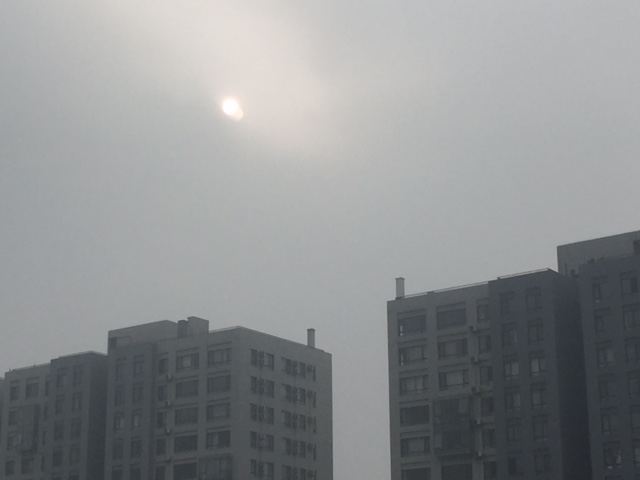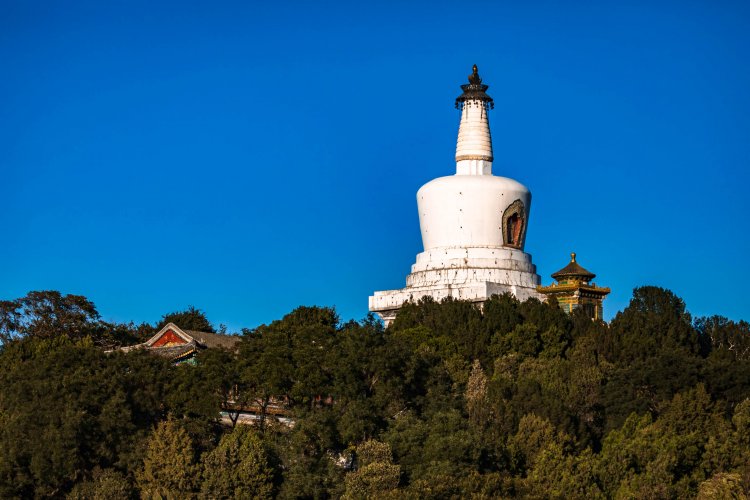Toxic Soup: Ten Pollutants Affecting Beijing’s Air
Beijing may have seen an overall improvement in the air quality in 2015 over the previous few years, but all that goes out the window whenever another toxic blanket of smog rolls in and smothers our city. It’s times like these when we can all smell, feel (and sometimes even taste) the noxious air outside, but do you know exactly what makes up all that murk? Here are ten of the most common carcinogens in Beijing smog.
Arsenic
Coal burning and industrial metallurgy have lead to an abundance of arsenic in Beijing’s air, a deadly surplus which totaled 3.85 times the limit set by Ambient Air Quality Standards during the infamous “Airpocalypse” of 2013. This heavy metal laces the capital’s PM2.5’s and can damage the nervous system, cause cancer, lead to cardiovascular disease, and other serious afflictions.
Black Carbon
You surely know this pollutant all too well, even if you haven’t heard its name. Black carbon is, essentially, the soot bleached out by cars, factories and crop burning. Experts say these grubby particles have a tiny enough diameter to be lodged deep in our lungs if we breathe them in, adding that this provides “absorption sites for secondary toxins that would otherwise be cleared. This compounds the danger, making black carbon an especially potent risk factor for lung disease and premature death.”

Dust
Beijing has long been notorious for its dusty climate – even before smog was so prevalent in its skies, sandy dust storms and dust particles were a common fact of life here in the capital. But as climate change has increased China’s rate of desertification, the sandy stuff has become just one part of the hazardous blend of chemicals, germs, bugs, plastics and a host of other nasty carcinogens that frequently pollutes our air.
Lead
Many Beijingers think they are safe from the adverse effects of our city's smog once they're indoors, with their windows sealed and air purifiers cranked to high. However, if those purifiers aren't designed to ward of VOC's, then they aren't safeguarding anyone from the indoor pollutants that can potentially be as harmful as the grey haze billowing outdoors. Lead is one of the most prominent toxins among these indoor pollutants, also known as Volatile Organic Compounds (VOC’s). Experts say that ceramics, paint, and other household mainstays are often addled with lead in China.
Mercury
The black clouds spewing from China’s coal smoke stacks don’t just look ominous – they’re also laced with deadly amounts of mercury. The WHO says that breathing in this pollutant in large quantities can damage the digestive, immune and nervous systems, along with impairing the lungs and kidneys and may be fatal. In 2013, China’s smog levels were so high news outlets reported that the PRC’s haze had drifted all the way to the American State of Oregon. The article added that mercury was “the most significant” pollutant in those hazardous clouds, because it poisons fish and other aquatic life.

Nitrogen Oxide
Nitrogen oxide, or NOx, is caused by fuel combustion, mostly from automobiles, but also power plants and heavy industry. Lung function can be severally decreased after long term exposure, according to experts who also warn that the toxin can worsen allergies.
Ozone
Some pollutants literally make the Earth less green. Such is the case for ozone, a toxin widely emitted by Chinese refineries and vehicles that is so invasive it inhibits photosynthesis. One report suggests a 25 percent drop in Yangtze basin crops can be attributed to this ominous toxin.
PM 2.5 and PM 10
Of all the hazy buzzwords, PM2.5 is used most frequently, especially in breathing mask and air purifier adds that declare their designs can safeguard against these hazardous particles. But do most of us actually know what PM2.5’s are, or why they are so harmful? The acronym comes from this particulate matter being smaller than 2.5 micrometers, which is 100 times thinner than a human hair. That means these particles are not only smaller but also lighter than their bigger pollutant counterparts, allowing them to linger in the air longer and travel further, floating hundreds of miles as opposed to the hundred-yard limit of larger PM10 particles (see below). Aside from travelling further, PM2.5's are also small enough to burrow deeper into our lungs than any other pollutant, posing a greater health risk that is compounded by their origins – mainly cars, refineries and coal plants – which are more toxic than other pollution sources. In Beijing, these particles are often laced with heavy metals like arsenic, making them all the more hazardous.
PM 10 refers to particles are bigger than PM2.5's (smaller than 10 micrometers as opposed to 2.5). Construction sites are primary PM10 culprits, because the crushing and grinding of bricks and stone elicits these harmful particles, which are then blown in the wind and inhaled by people who are up to 100 yards away. Experts say that PM 10's can cause asthma sufferers to have a greater number and larger severity of attacks, and result in lung diseases like bronchitis, as well as hamper the body's immune system and other means of fighting infections. Ozone is among the most hazardous of these particles.

Selenium
Coal, once again, is the harbinger of another hazardous pollutant: selenium. Ecologists say high exposure to this pollutant “may lead to dizziness, fatigue, irritation of the digestive tract and in extreme cases may lead to collection of fluid in the lungs and bronchitis.” Selenium can also sully the air during the burning of oil, and manufacturing like the production of glassware for electronics.
SO2
This pungent toxin, also known as Sulphur Dioxide, is released by burnt fossil fuels in large portions. Experts say the primary source for SO2 is power generation, and they add that this chemical can lead to acid rain and can damage the bronchial system of anyone who breathes it in.

Here’s How to Protect Yourself and Breathe Easier
MayAir's purifiers have several pollution busting features, like HEPA filters that ward of PM2.5's and a patented design that transforms VOC's into harmless, easily disposable water. For more information on their top of the line purifiers, visit www.mayair.com.cn.

This post is sponsored by MayAir. Find out more about by visiting www.mayair.com.cn.
Photo: Uni You
Related stories :
Comments
New comments are displayed first.Comments
![]() Jerry
Submitted by Guest on Fri, 12/04/2015 - 10:25 Permalink
Jerry
Submitted by Guest on Fri, 12/04/2015 - 10:25 Permalink
Re: Toxic Soup: Ten Pollutants Affecting Beijing’s Air
That's a good question. Some sources point to car exhaust, while others say industrial pollution is the main culprit.
While I think both are major contributors, I believe industrial pollution (much in the form of coal burning) is primarily responsible for days like the ones we recently experienced.
Either way, it's a losing combination.
Validate your mobile phone number to post comments.





